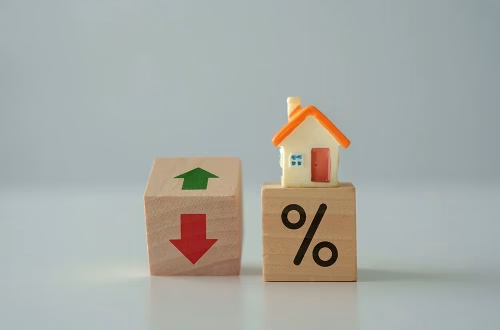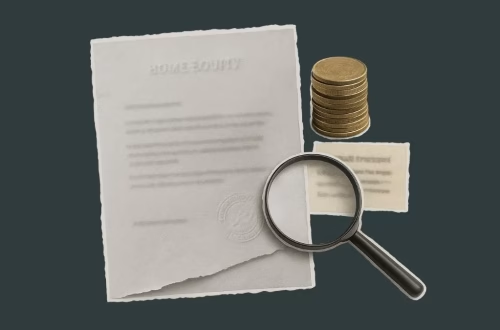Are Mortgage Interest Rates Rising?
Summary:
Mortgage interest rates have risen significantly in 2023-2024 due to inflation, Federal Reserve policies, and global economic uncertainty. For aspiring homeowners, this increases borrowing costs and reduces purchasing power. Investors face tighter profit margins on rental properties, while businesses using commercial real estate loans experience higher capital expenses. Understanding rate trends is critical now – locking in a favorable rate or choosing the right loan type can save thousands over the loan term. With experts predicting continued volatility, proactive planning is essential to avoid financial strain or missed opportunities.
What This Means for You:
- Higher monthly payments: A 1% rate increase adds ~$200/month to a $300K loan. Adjust budgets or consider smaller loans.
- Refinancing squeeze: Existing homeowners may lose refinancing opportunities. Explore streamline options like FHA refinances.
- Investment strategy shift: Investors should prioritize properties with strong cash flow cushions (7-10%) to offset rising rates.
- Future uncertainty: Rates may stabilize but are unlikely to return to 2020-2021 lows in the near term. Lock rates quickly if approved.
Explained: Are Mortgage Interest Rates Rising?
Mortgage interest rates represent the cost borrowers pay lenders to finance real estate purchases, expressed as a percentage of the loan amount. Rates are influenced by macroeconomic factors including Federal Reserve benchmark rates, 10-year Treasury yields, inflation data, and housing market demand. As of Q2 2024, average 30-year fixed rates hover near 7%, up from 3% lows in 2021 – a 133% increase creating the most unaffordable market since 2008.
This surge stems from the Fed’s aggressive rate hikes to combat inflation, which peaked at 9.1% in 2022. Though inflation cooled to 3.4% by mid-2024, the Fed maintains elevated rates to prevent rebound inflation. Concurrently, investor demand for mortgage-backed securities (MBS) has weakened due to economic uncertainty, forcing lenders to raise rates to offset risk. For borrowers, every 0.5% rate increase reduces purchasing power by approximately 5%, significantly impacting home affordability.
“Are Mortgage Interest Rates Rising?” Types:
Fixed vs. Adjustable-Rate Mortgages (ARMs): Fixed-rate mortgages (currently 6.5-7.5%) provide payment stability but higher initial rates. ARMs (5.5-6.5% initial rates) offer short-term savings but risk sharp increases at adjustment periods (e.g., 5/1 ARMs reset after 5 years). In rising rate environments, ARMs become riskier, making fixed-rate loans preferable for long-term owners.
Government-Backed Loans: FHA loans (6.0-6.8%) remain accessible for lower-credit buyers (580+ scores) but carry costly mortgage insurance. VA loans (6.2-6.9%) offer military families rate advantages despite market increases. Jumbo loans (7.0-7.8%) exceed conforming limits ($766,550 in most areas), requiring stronger financials as rates climb.
Requirements of “Are Mortgage Interest Rates Rising?”:
Lenders now enforce stricter criteria due to economic risks. Borrowers typically need 680+ credit scores (up from 620 pre-2022), debt-to-income ratios below 43%, and 3-6 months of payments in reserves. Self-employed applicants face heightened scrutiny – two years of tax returns and YTD profit/loss statements are standard.
“Are Mortgage Interest Rates Rising?” Process:
1. Pre-approval: Secure lender rate quotes within 14 days to minimize credit score impacts from multiple inquiries. Provide W-2s, pay stubs, and asset statements. 2. Application: Lock rates for 30-60 days (expect fees of 0.25-0.75% of loan amount). 3. Underwriting: Anticipate requests for additional documentation like gift letters or employment verification. 4. Closing: Prepare for higher upfront costs – rising rates increase discount points (1 point = 1% of loan to lower rate by ~0.25%).
Choosing the Right Finance Option:
Prioritize lenders offering float-down options (rate reduction if market drops before closing). Compare APR rather than headline rates – fees vary significantly. Avoid lenders pushing interest-only or balloon loans during rate spikes. For investors, consider commercial ARMs with 10-year fixed periods to balance cash flow and uncertainty.
People Also Ask:
Why are mortgage rates increasing so quickly?
Rates rise primarily due to Federal Reserve policies combating inflation. When the Fed hikes benchmark rates, banks face higher borrowing costs, passed to consumers via mortgages. Secondary factors include reduced investor demand for mortgage bonds and global economic instability.
Should I wait to buy a home if rates are rising?
Delaying risks pricing yourself out – a 1% rate increase on a $400,000 loan costs $265 more monthly. Instead, buy strategically: negotiate seller concessions for rate buydowns (temporary rate reductions), or opt for shorter-term ARMs if planning to sell within 5 years.
How do rising rates affect adjustable-rate mortgages?
ARMs reset periodically based on indexes like SOFR (Secured Overnight Financing Rate). With SOFR rising from 0.05% in 2021 to 5.3% in 2024, a $500K 5/1 ARM could jump from 5.5% to 8.5% at reset, increasing payments by $1,000+/month.
Can I lock my mortgage rate during volatile periods?
Most lenders offer 30- to 60-day locks. For longer locks (90-120 days), expect fees up to 0.75%. “Lock-and-shop” programs pre-approve buyers with guaranteed rates while searching for homes.
Will mortgage rates ever drop below 5% again?
Economists at Fannie Mae predict rates won’t fall below 6% before 2026. Sub-5% rates would require sustained inflation below 2% and economic stagnation – unlikely in current conditions.
Extra Information:
Freddie Mac Mortgage Market Survey – Tracks weekly rate averages across loan types.
Federal Reserve Monetary Policy – Explains rate decisions influencing mortgages.
CFPB Owning a Home Tool – Interactive guides for first-time buyers navigating rate changes.
Expert Opinion:
Navigating rising mortgage rates requires agile financial planning – securing pre-approvals quickly, understanding rate lock trade-offs, and choosing loan structures aligned with your timeline. Buyers must realistically assess payment comfort zones, while investors should stress-test portfolios against potential 8-9% rates. Partnering with lenders offering transparent fee structures and contingency planning is now non-negotiable.
Key Terms:
- 2024 mortgage rate trends
- how rising interest rates affect home buying
- best mortgage type when rates are high
- refinance options in rising rate environment
- fixed vs ARM mortgage comparison 2024
*featured image sourced by Pixabay.com
Automatic Mortgage Calculator
Welcome to our Automatic Mortgage Calculator 4idiotz! Please just add your figures in the correct sections below and the Automatic Mortgage Calculator will automatically calculate the results for you and display them at the bottom of the page.





